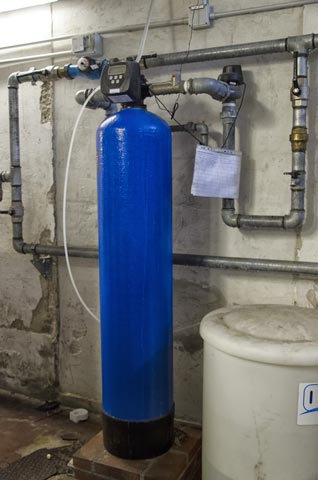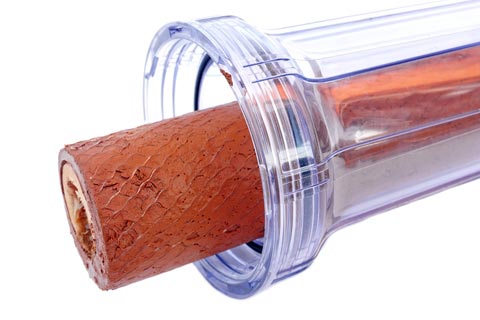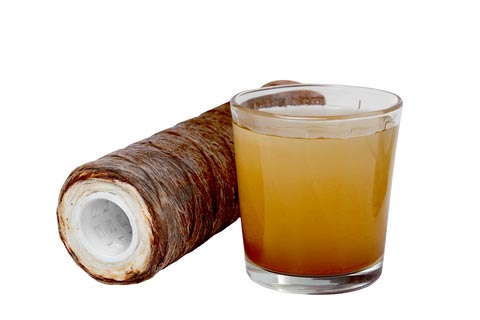Adding a Pre-Filter Protects and Improves the Effectiveness of your Water Softener

Okay, so you’ve decided to install a sediment filter with your water softener, but you’re wondering if you should install the water filter before or after the softener.
A sediment filter should always go before your water softener. A water softener is not made to remove silt and dirt, that’s what a sediment filter is made for. A sediment filter installed before the softener will protect and prolong the life of your water softener.
What’s in Your Water?
You’ve probably heard it before, but the best way to know what is in your water and how to deal with it, is to have your water tested.
This is the only way to know for sure, what’s in your water and how to treat it.
Most people are reluctant to test their water, because it costs money and takes effort to send it to a lab. I get it, I tend to be frugal this way.
One simple and free approach you can do is to fill up a large clean, white container from your cold water and see if you can notice any discoloration or particles in the water. A white 5-gallon pail is perfect for this home test, or even your bathtub.
A large body of water is easier to spot murkiness or discoloration in water. You’ll also want to look for any particulates floating, or settling to the bottom.
Install a Sediment Filter, Just in Case

At this point, you may want to install a filter, even if it’s just to capture a small amount of sediment. For those of us on well water, having a sediment pre-filter is a must.
A water supply from a municipal source is less likely to have sediment and particulates in it, but it’s still not uncommon.
Maybe you already know that you want to install a sediment filter. You’ve seen particulates in your water, or maybe you’ve noticed traces of sediment in your toilets. In that case, I would suggest installing a Point of Entry sediment filter, after your Holding Tank (if on on well), but just before your water softener.
Dirt, silt, sand, and other types of sediment will make your water softener less effective and shorten the life of the softeners resin beads. Removing these contaminants will protect your softener.
If you can find one, I suggest installing a clear filter-housing, so that you can visibly see the condition of the filter without having to close the valves and remove the housing for inspection. With a glance, I can quickly see the condition of my filter to see if it needs changing.
A dirty filter will have a thick coat of medium-brown colored sludge, as shown in the image above. As the sediment on the filter grows thicker with use, water pressure in the house gradually drops and is very noticeable.
Varying Levels of Contamination

At certain times, my well water can run fairly clean, where I don’t have to change my sediment filter for weeks. Other times, during periods of prolonged rains, or during prolonged dry weather, my sediment filter seems to become clogged much more quickly and I have to change it out about once a week to restore our water pressure.
At my place, when I turn on a faucet and find it’s flowing slower than normal, or if the pressure drops a lot when more than one person is running water in different parts of the house, I also know it’s time to change out my sediment filter.
The Water Softener is Also a Filter
The water softener itself is a filter. A water softener is meant to filter out calcium and magnesium minerals, not particulates and dirt. If dirty water is allowed to flow into the water softener, dirt can collect on the rotating valves in the controller and become inoperable. This is another good reason to install a sediment filter before the softener.
Water softeners will remove small amounts of iron, but are not specifically designed to treat high concentrations. There are more effective ways to deal with high iron levels. We’ll discuss this in another post.
Post Softener Filtration
Adding a carbon filter, placed after the softener will remove any chemical contaminants that may be present in the water, such as chlorine, and agricultural pesticides and herbicides.
Conclusion:
A pre-filter is not necessarily needed for all water softener installations, but if your water comes from your own private well, installing a sediment filter is usually a necessity.
A whole-house filter housing with sediment filter can be low cost. A good one can be as little as $60. Replacement filters are also reasonably priced. If you have only a few particulates in your supply water, then it could be many weeks before you need to change out your filter.
This will assure that you’re protecting, not only your water softener to keep it working its best, but also protect your other water-using appliances (dish washer, hot water heater, clothes washer, reverse osmosis drinking water filter, etc.
So, it boils down to how clean your incoming water is. Having a pre-filter before your water softener is a smart idea. It will extend the time between softener regenerations. You will prolong the life of your softeners resin bed, by pre-filtering the water with a Sediment filter.
These Crystal Quest Water Softeners come with both a sediment pre-filter, which protects the water softener, and a carbon block post-filter to remove chemicals, tastes and odors that may be present, for a well-rounded water treatment system.

So Mark, upon reviewing your comments “maybe you’ve noticed traces of sediment in your toilets. In that case, I would suggest installing a Point of Entry sediment filter, after your Holding Tank (if on on well), but just before your water softener.”
Should I then install a pre-filter just before the actual first well filter, meaning between the casing piping that comes from the well ? Or you meant between the two, just before the water softener filter ? I was told by a tech that he would actually install the pre-filter directly from the well piping just before both filters thereby protecting the actual bedding of both of filters..
Hi Tito,
Thanks so much for the question. I’ve seen it done both ways. Having the whole house sediment filter installed on the main water line, as soon as it comes into the house (point of entry), before the water travels to the well pressure tank. The water then travels to the water softener and then on to the rest of the house. I actually think this is a good setup, as the whole house sediment filter will also help protect your pressure tank (holding tank).
Having said that, when I built my house 21 years ago, I hired a professional well driller to drill my well and setup my well pressure tank and water softener. He installed a sediment filter housing between the pressure tank and the water softener. Even though a lot of sediment can come from my well at certain times of the year, I’ve never yet had a problem with sediment gumming up my pressure tank. I just make sure I change the sediment filter regularly, when it become fouled.
The bottom line is, if you have well water, it’s okay to install your whole house sediment filter before or right after your pressure tank. Either way will help protect your water softener.
I hope I answered your question sufficiently. Please feel at ease to reply if you have other questions.
Thank you, -Mark
Thank you so much Mark !
Tito
so… how do you remove all that salt?